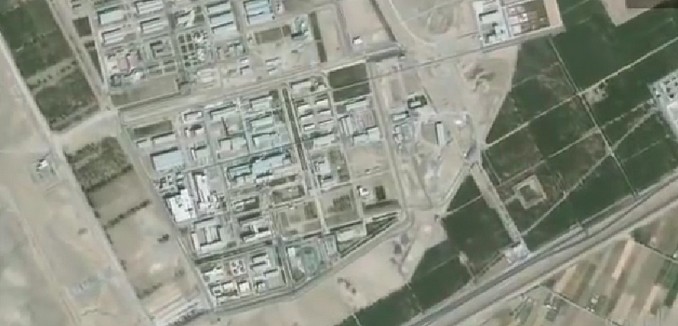The announcement earlier this week that Iran had self-inspected its suspected nuclear research site at the Parchin military base, without inspectors from the International Atomic Energy Agency (IAEA) present, undermined the agency’s ability to address concerns about past and possibly current Iranian nuclear weapons work, former international weapons inspectors asserted Tuesday.
A paper written by Olli Heinonen, the former deputy director-general of the IAEA; David Albright, the founder and president of the Institute for Science and International Security and a former weapons inspector; and the institute’s research associate, Serena Kelleher-Vergantini, stated that the IAEA’s procedures, which allowed Iran to handle its own inspection of its military site while the IAEA monitored remotely, were inadequate:
The manner in which environmental samples were taken raises troubling precedents for both the IAEA’s investigation into Iran’s past work on nuclear weapons and the verifiability of the long term nuclear deal, the Joint Comprehensive Plan of Action (JCPOA).
The IAEA did not reveal any specific details of the sampling arrangement, whereby the IAEA directed the taking of environmental samples inside the key building of interest or possibly at other locations at the site. It is known that the process of taking samples was videotaped by the Iranians with IAEA direction and control. However, the media reporting was unclear regarding whether the video taping was done in real-time, i.e. with a live feed to IAEA inspectors located elsewhere, or was accomplished by the Iranians and the digital files then given to the inspectors for analysis, review, and subsequent action, which could have involved additional videotaping. In this case, the inspectors may have first received videos taken inside the suspect building. After reviewing the videos, the inspectors would have instructed the Iranians where to take the samples, a process also videotaped by the Iranians Afterwards, the Iranians would have presented the new videos and samples to the IAEA. However, what actually happened remains unknown publicly.
Nonetheless, IAEA inspectors were not physically present when the Iranians took the environmental samples in the suspect building. This is confirmed by [IAEA Director-General Yukiya] Amano’s public statement: “We entered a building which the Agency [IAEA] had previously only been able to observe using satellite imagery.” This absence of IAEA inspectors inside the building is what several members of Congress and the Associated Press referenced in their statements and reporting, albeit sometimes in more general terms.
The absence of IAEA inspectors at Parchin raised questions among lawmakers and experts over whether the samples collected by Iran could be trusted for the IAEA’s analysis. Although Amano has said that it isn’t unusual to allow countries to take their own samples,the paper argued that past self-inspections were done only in limited cases where there was danger of contamination and with IAEA personnel physically present at the time.
Videotaping alone is unlikely to ensure that the samples are representative or that weaknesses were identified in the modifications inside the building. The physical presence of trained, experienced inspectors, with the ability to investigate the building or site up close, is critical to detecting the best places to sample, particularly in the case of a country that has a history of violating its safeguards obligations.
The building in question at Parchin is believed to have housed a chamber used to test high-explosives that could be used to detonate a nuclear weapon. The chamber is no longer present in the building and the IAEA has evidence that it could have been dismantled and removed.
Allowing Iran to determine the scope and nature of inspections in Parchin, would set a precedent by allowing Iran to similarly limit inspections of other military sites in the future. It would also undermine the credibility of the IAEA, whose chief responsibility is to determine what exactly happened in Parchin in order to fully assess the possible military dimensions of Iran’s nuclear research prior the lifting of sanctions.
The paper concluded by arguing that because of the weakness demonstrated in collecting the samples earlier this week, the IAEA must strengthen its inspections and make the secret terms of the agreement between the IAEA and Iran publicly available.
The IAEA needs to demonstrate during the next months as the JCPOA is implemented that it can access Iranian sites of concern, including military sites, and conduct effective verification into the allegations of Iran’s past nuclear weapons work. It should release the Parchin agreement and associated procedures to member states, followed by gaining access to the other, known sites associated with past nuclear weapons work and interviewing key scientists and engineers linked to those efforts. With the relatively weak start posed by the Parchin case, the IAEA’s priority should be strengthening verificaton and transparency measures from now onwards.
[Photo: sherlock72 / YouTube ]




